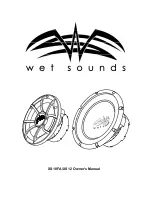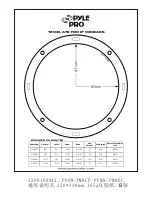
27
Bi – amping (horizontal)
In a bi-amping arrangement the signal paths for the bass and mid-range/treble
ranges are separated before they reach the power amplifiers.
In the
horizontal
bi-amping version, one stereo power amplifier is used to
amplify the bass range for both channels, while a second stereo power
amplifier drives the mid-range/treble range of both channels.
Advantage
: symmetrical load on the power amplifier mains power supply for
both channels.
Disadvantage
: the power amplifier determines the channel separation.
Bi – Amping (vertical)
In the
vertical
bi-amping version the power amplifiers work in a strictly
channel-separate arrangement.
One stereo power amplifier amplifies the signals for one loudspeaker: one
channel drives the treble/mid-range, the other channel the bass range.
Advantage
: maximum channel separation in the power amplifiers. Power
amplifiers can be located close to the speakers, therefore short speaker leads
can be used.
Disadvantage
: asymmetrical load on the power amplifier mains power supplies
due to bass processing on one side and mid-range/treble processing on the
other.







































